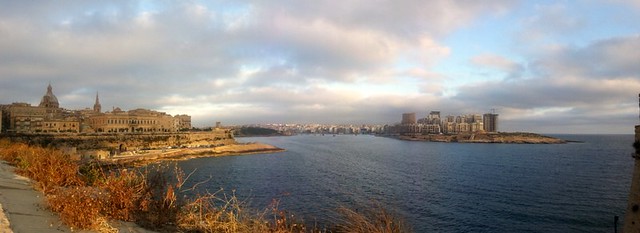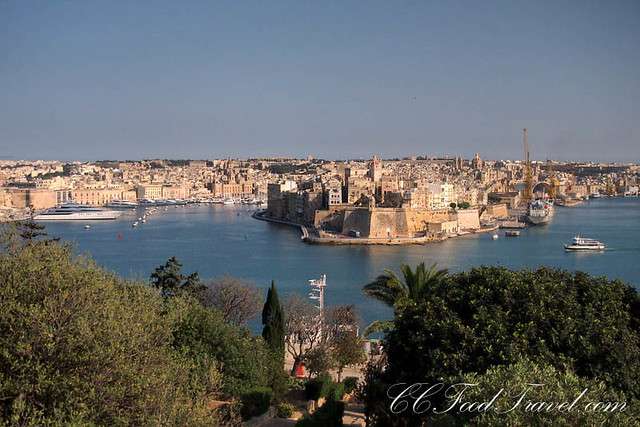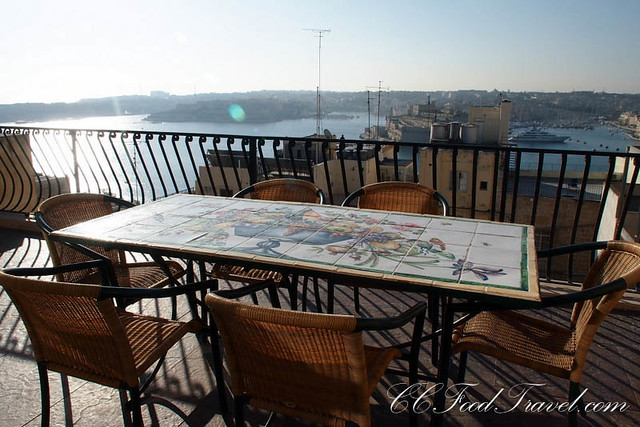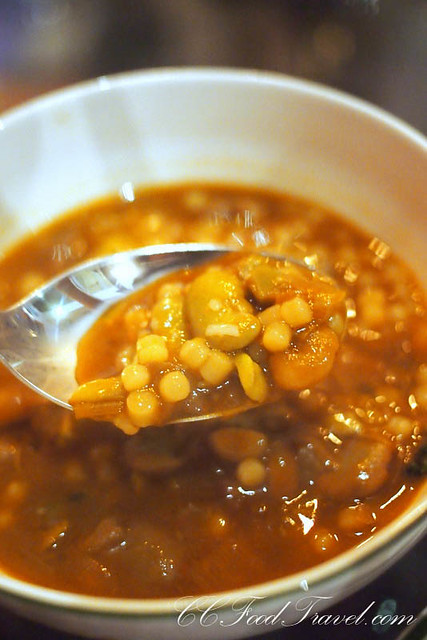One of the most historic spots in the Mediterranean, and one of the most concentrated historic areas in the world, happens to be a place that I am currently in and exploring, Valletta, Malta.
The charmingly diminutive capital, Valletta, a World Heritage City and European Capital of Culture 2018, is a perfect place to stroll around soaking up the history.
It is hard to fathom that Valletta started life during the rule of the Knights of St John. In fact, it is named after Grand Master Jean Parisot de la Valette, who succeeded in defending the island from an Ottoman invasion in the Great Siege of 1565. The city overlooks the impressive Grand Harbour to the southeast and Marsamxett Harbour to the northwest.
The best views in the Mediterranean during my morning run.. the Grand Harbour as seen from Barbara Bastion
Malta is a group of seven islands in the Mediterranean Sea. Only the three largest islands – Malta, Gozo and Comino – are inhabited. The terrain is low and rocky with coastal cliffs.
Malta is a melting pot of civilisations with a history stretching back thousands of years. The country has been inhabited since around 5200 BC and a significant prehistoric civilisation existed on the islands prior to the arrival of the Phoenicians who named the main island Malat , meaning safe haven. Later the islands were for centuries the seat of the Order of Knights of the Hospital of St John and then part of the British Empire. Malta became independent in 1964.
Marsamxett Harbour as seen from English Curtain
Malta has a population just shy of 500,000 and the country covers just over 316 km2, making it one of the world’s smallest and most densely populated countries. Valletta, the capital, is also the smallest capital in the EU at 0.8 km2. No wonder I ran round it so many times!
Valletta is peppered with historic sites. They range from its unique Neolithic temples (older than the Great Pyramids) to the legacy of the Knights of St John, known for good reason as The Knights of Malta. Valletta’s feel and architecture can only be described as Baroque. It also has bits of Neo-Classical and Modern designs throughout the city. Malta has many churches, 359 I am told, (313 in Malta and 46 in Gozo) and also a large number of temples and museums, one of the rather unique ones that I am looking forward to visiting this Saturday is the Hypogeum – the underground temple that is so unique and famous that you need to book your tickets at least 2 months in advance in order to secure a spot.
St John’s Co-Cathedral is a gem of Baroque art and architecture. It was built as the conventual church for the Knights of St John. The Grand Masters and several knights donated gifts of high artistic value and made enormous contributions to enrich it with only the best works of art. This church is till this very day an important shrine and a sacred place of worship.
Pastizzi
Well, not only does Valletta have tons of character, architectural excellence and a deep and rich history, it also has amazing food as well. Maltese cuisine is gloriously fresh, seasonal and full of Mediterranean goodness. I was surprised at how similar, yet distinctively different the food was, as I explored the place.
Something I enjoyed sinking my teeth into for breakfast were the Pastizzi. Ah yes indeed.. the famous pea or ricotta pastizzi from Malta.. Pastizzi are made up of diamond shape pastries filled with either ricotta (similar to Italian ricotta but less dense) or slightly spicy pea filling, known respectively in Maltese as pastizzi ta’ l-irkotta and pastizzi tal-pizelli. The pastry is made using a puff-pastry like dough that crumbles delicously especially when the pastizzi are served freshly baked in the various pastizzerias dotted around Malta and Gozo. These were sampled at Cafe Jubilee on St Lucia Street, Valletta. A must visit.
Anyway, on Day 1, I arrived and check into our luxury suite at the Palazzo Prince D’Orange. Located on St Paul’s street, this charming 17th Century baroque palazzo is a true gem. We learned that the place had recently been restored so it retained a lot of it’s old charm, but had the functionality of a modern hotel. Its location is so convenient as it is a stones throw from all the main architectural, administrative as well as religious buildings in Valletta. Not only that, it’s a 1 minute walk to the cafes, shops and restaurants. Based on a grid system, it is easy enough to navigate Valletta without getting lost.

My favourite room at the Palazzo.. the drawing room.. how nice if this were my home, and I was hosting a party here.. I can just see it.. totally cool!
WIth names like Alexander Suite, Beatrix Suite and the Wilhelmina Penthouse, it’s hard not to be impressed with this place. There are 5 suites all together, and they can accomodate 15 pax max, comfortably. Some suites have pull out beds, so ask for the bigger ones if you have a party of more than two.
Suites are finished to an amazingly high standard and perfectly furnished with a good mix of old world antiques and modern amenities.
Love the lounge, but didn’t even turn on the TV for a second, since arriving here!
As for the rooms, the lift opens directly into your apartment but have no fear, you can lock it up at night with a key. The kitchens are well equipped, with top-class crockery, cutlery and basic snacks, such as biscotti, milk, coffee and tea. You have the option of cooking in your apartment if you like, but honestly, with the shops and cafes so close by, it’s just easier to eat out! There are also laundry facilities and you can do wash in the open area on the 4th floor.
Of course the establishment is a gem. But there is also another less obvious gem at the Palazzo that not many know about, but we had the pleasure of meeting. His name is Daniel.
Daniel is one of the most amicable and well informed hosts, and hotel managers, I have ever had the pleasure of meeting and he made our stay at the Palazzo a memorable one. He is the walking, talking Wiki of Valletta! Ask him anything to do with the place, and he will have an answer for you. Not only that, he never hesitated to show us around or point us in the right direction of a good, (non-touristy) cafe. So far, no bad experiences with Daniel around.
A splendid view of the Three Cities
The Three Cities are a big part of Malta and its history. These cities provide a glimpse into Malta’s maritime fortunes. They are Vittoriosa, Senglea and Cospicua, and they have provided a home and fortress to almost anyone who settled on the Islands.
4th floor, Palazzo, my favourite blogging spot, inside…
but definitely my all time favourite blogging spot.. OUTSIDE!
The 4th floor of the Palazzo is a great place to watch the maritime activities below at the harbour
Breakfast al fresco style, at the palazzo means some some time to catch the sun rays too. My kind of place!
more views that take your breath away
So, now you understand why the common area on the 4th floor turned out to be my favorite blogging spot. It had the best view in the entire house. It was also a great place to host dinners. We had our welcome dinner there on the first night, cooked by Chef extrodanaire Julian of Gululu Restaurant, and Neville – it was one of the nicest inductions into Maltese cuisine.
The common dining area
Talk about dining like a rock star. The chefs arrive to cook for us, an authentic Maltese dinner, in our very apartment!
So, between Daniel making interesting conversation, and Julian filling us in on Maltese cuisine, dinner kicked off with some delectable mize’ (appetisers) that comprised of several dips. The first was an Anchovy dip, made from Anchovy (Incova), Marjoram (Merqtux) and Tomato Paste ( Kunserva). This was my favourite of the lot. The second dip was made with Olives (Zebbug), Garlic (Tewm), and Mint (Naniegh) and the third one was something the Maltese call Kappunata – a cooked “salad” if you like, using Aubergine, Celery, Olives and capers as the main ingredients. All were laced with the goodness of the Mediterranean oils and this sort of diet can only be described as great for the heart.
These were served with Galletti, Maltese water biscuits made of flour and semolina and we ate up greedily, though there was more to come.
Next delicious patties that remind me of crab cakes were served. Called the Pulpetti tat – Tonn taz – zejt, these were little fried patties made with potato, tuna fish (canned), marjoram, mint, and fresh garlic. The flaky, crumbly freshness of the tuna, mingled with the intoxicating herbs and spices to give you heady explosions of intense flavour with each bite. How on earth could they top this, I wondered.
Oh but there was more.
Enter these super delicious Ġbejna or ġbejniet – round cheese made in Malta from sheep’s milk, salt and rennet. Ġbejniet are prepared and served in a variety of forms – fresh (friski or tal-ilma), sundried (moxxa, bajda or t’Għawdex), salt cured (maħsula) or peppered (tal-bżar). The fresh variety have a smooth texture and a milky flavour and are kept in their own whey in a similar manner to mozzarella. The sundried variety have a more definite, nutty almost musky taste, and are fairly hard. The peppered variety are covered in crushed black pepper and cured, after which they may be stored in oil or pickled in vinegar. Their sharp taste becomes more piquant the more they age and they also develop a crumbly texture.. if you love goats cheese, you will love this.
Don’t let this simple looking dish fool you. It is a meal in itself! Kusksu is a very traditional thick soup based on Ful Frisk (Fresh fava beans), which happens to be in season, at this of the year, typical of vegetarian(Lent) dishes. This also contained Peas, fresh garlic, tomato paste, bay leaf, some peperoncino and of course, the little pasta Kusksu beads, not to be confused with their North African cousin, Cous cous. Biting into a mouthful, the Kusksu were just shy of al dente, and you feel like you’re biting into chewy pearls or beads. Smooth, and bland, it was a great complement to the salty soup. It might have been a little too salty for me, but the others loved it.
Then came the Klamari moqli (fried Calamari), cooked in fresh garlic and olive oil then doused with white wine and left to simmer gently, flavoured with chopped parsley. The pink hue comes from the juices of the calamari itself. Not much was added and it didn’t need much spicing up anyway, as it was perfectly fresh and bursting with oceanic flavours.
Then time to sample a dish that the Maltese are very proud of. Rabbit pie.
The Torta tal – Fenek is considered to be a national dish. Most commonly it is fried with garlic or stewed with wine and other ingredients but tonight, we would be having pie. This pie was made of the rabbit pieces stewed with, wine, garlic and fresh herbs and a light mixture of spices, marrow fat, peas and carrots in puff pastry. The pastry was dense yet crumbly. Pretty orgasmic stuff.
Finally, we were served the Laham Imtektek, but I could hardly eat another bite. Which was a shame really, because this dish of simmered beef, was a great example of slow cooking, that preserves all the nutrition in the meat, which Julian is a huge advocate of. Imtektek is a good example of Onomatopeia, too, i.e. you can hear the slow simmering bubbles in the gravy going tek…tek…tek…, hence the name Imtektek! These thin slices of tender beef were then pan seared again with garlic, then simmered gently with red wine and fresh Thyme, then served. Super awesome dish, for meat lovers.
So with that meal, I had finally popped my Maltese cuisine cherry, and like any new believer, I was hungry for more. There will be more goodness to come, once we visit Gozo tomorrow I am sure.
Valletta. Golden by day, and golden by night..
the city sleeps…
More adventures to come.. stay tuned!
This post was brought to you by the Blog Island Malta campaign, created and managed by iambassador in partnership with the Malta Tourism Authority and the support of Air Malta. However, CCFoodTravel maintains full editorial control of the content published on this site.





































Stunning photography! Enjoying your photos on IG too of your travels 😉
Thanks baby sumo!! I will. Stay tuned for more stories! 🙂
LOVED the hypogeum!!! We booked in advance and saw it, however no photos. This is to preserve the site, its pretty delicate. Absolutely fascinating. We loved Malta!
Really? OMG.. i can’t wait !!
Great post! Love the photos and spot on about Dan being a gem; couldn’t ask for a more hospitable and knowledgeable gent!
LOL. I know.. he is the bee’s knees 🙂 Valletta’s other walking, talking gem!
Oh my, the landscapes are amazing! I’m so excited for this opportunity to visit Malta for Blog Island and can’t wait to explore Valletta. What it comes to food, wow. It all looks delicious, even the rabbit pie although I wouldn’t eat it as a pescatarian. Thank you for the reading experience and the beautiful pictures!
LOL, a lot of nice vegan dishes here too! The fresh produce is great.. You will fall in love with Valletta. I certainly did:)
Great photos and nice post! What is your running track? I will stay there in May, and need to prepare myself for Copenhagen Marathon…
Well, we just kept running right round the island for 2 hours. If u like, St Julian’s is also a great place to run. Nice running track along the harbour;)
Hey… very interesting piece. Cant wait for more…:)
Thanks!
Malta looks rich in history, food, views, and knowledgeable hotel managers.
LOL.. perhaps not all are as knowledgeable.. we just got lucky:)
Malta – The island floating in the Mediterranean ocean is incredible. The picture of the city overlooking the harbor is stunning beauty. The citizens of Malta are unfortunate to experience such unbelievable views in the dawn. It is really interesting to know that the island dates back to Pre-historic times. Definitely worth exploring on a thanks for the post, pictures and dishes yummy !!!
for sure!